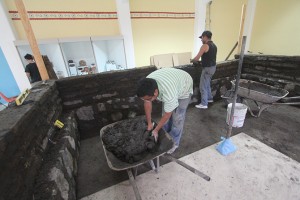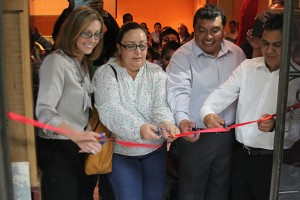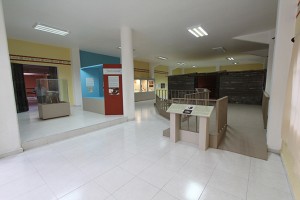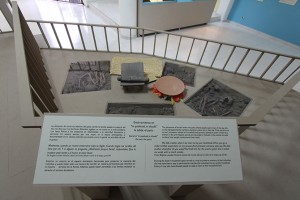Critical Reflection on Barriers to Ethical Archaeological Practice Based on a Collaborative Museum Project at Xaltocan, Mexico
Lisa Overholtzer
The American Anthropological Association’s fifth principle of professional responsibility is “Make Your Results Accessible.” Codes of ethics for archaeology, in particular, often emphasize public outreach to those groups who identify the archaeological remains as pertaining to their own cultural heritage (e.g. Principle of Archaeological Ethics No. 4 of the Society for American Archaeology). The Codes of Ethics of the World Archaeological Congress goes further in stipulating that archaeologists seek “to establish equitable partners and relationships between Members and indigenous peoples whose cultural heritage is being investigated.” These wide-ranging strategies—from communicating findings to descendant communities to inclusive, collaborative research—are situated on opposite ends of the collaborative spectrum, as defined by Colwell-Chanthaphonh and Ferguson (2008:1-2). In recent decades archaeologists around the world have worked to move their archaeological practice toward more inclusive practices that benefit descendant and other stakeholding communities (Atalay 2012, Colwell-Chanthaphonh and Ferguson 2008, Dongoske, Aldenderfer, and Doehner 2000, Marshall 2002, Silliman 2008, Stottman 2010, Swidler et al. 1997). In this short blog post I will discuss some of my own efforts to this end, reflect on the limitations of this project, and consider one of the primary barriers we still face in collaborative endeavors.
In 2009, I began the Proyecto Arqueológico Xaltocan (PAX) or Xaltocan Archaeological Project to investigate the Aztec imperial transition from the perspective of commoner households. Archaeological research had been conducted at Xaltocan by Elizabeth Brumfiel and her collaborators and students since 1987. These scholars have always made their results accessible to modern residents (Brumfiel 2000); I simply sought to move archaeological practice further along the collaborative spectrum and return to Xaltocan some of the control over and benefits of the archaeological research process. I began with my hired crew, engaging them in the interpretive process, building capacity through education in the context of excavations, and facilitating a public symposium at the end of the field season in which crew members presented their findings on a topic of their choice (Overholtzer in press). Before finishing my analyses, I worked with residents to determine the next stage in this collaborative project. They communicated that talks and symposia were great, but temporary. Archaeology could really benefit the descendant community and have a lasting impact through a permanent exposition in the new exhibit hall they had recently constructed in the community museum. We decided to install as a central exhibit feature an authentic replica of an excavated Postclassic period adobe house, complete with house mound and patio simulated with a wooden platform. Household objects would be recreated and displayed inside the house and on the patio, and since residents were particularly interested in displaying ancient human remains, the burials of family members would be visible under the platform patio through plexiglass panels. Finally, exhibit cases around the room would display excavated artifacts and tell how and why we do archaeology. This exhibit would disseminate the project findings, educate visitors about Xaltocan’s past and how we have reconstructed it archaeologically, and possibly promote tourism to the site—all goals shared by many members of the descendant community.
I returned in 2013 to complete the museum exhibit. Four Wichita State students, the director of the Holmes Museum, and I collaborated with a team of 16 local residents with expertise spanning adobe construction, the growing and weaving of reeds, carpentry, engineering, and cultural programming. We were fortunate to have the historical association’s help in mobilizing residents and the local museum staff’s assistance in registering artifacts with INAH, the Mexican National Institute of Anthropology and History. The exhibit opened in September 2013 to much fanfare, now regularly receives visits from schoolchildren throughout the region, and has inspired the renovation of other, older exhibits in the museum.
While this project was successful by most measures, critical reflection reveals how it could have been even more collaborative and participatory. Unfortunately, this limitation was due to a common barrier in such projects: a shoestring budget. While new programs funding outreach and community collaboration have been developed in recent years—the Engaged Anthropology grant from Wenner-Gren and the Indigenous Heritage Passed to Present (In-Herit, formerly MACHI) grants, for example—they are still rare and limited in scope. I cobbled together funding from four sources (the Wenner Gren Foundation [Engaged Anthropology grant #29], the David and Sally Jackman Foundation, the Lowell D. Holmes Museum of Anthropology, and Wichita State University), but still was only able to stay in Mexico to work on the project for four weeks in the summer and one week in the fall once the adobes in the exhibit house were dry. We were unfortunately restricted in the number of local residents we could compensate and include in the project, as well. This meant that we had to travel to Mexico with a basic proposal for the exhibit hall layout and overall message, in this case, how we can construct a narrative that reflects the agency of past commoner residents and how we can reconstruct past health, daily practices, household philosophies, and gender norms. We then discussed and modified these ideas with community leaders. However, fully brainstorming those details with the larger community from the beginning would have been more collaborative. Many archaeologists now agree that community archaeology projects such as these are vitally important in our profession for ethical reasons, but the financial resources needed for implementation are lagging behind. Collaborative and outreach project funding remains one of the greatest challenges to future ethical engagement with descendant and other stakeholding communities.

Figure 8. Exhibit case featuring stratigraphy, ceramic seriation, and changes in burial practices over time
For additional photographs of the museum project, visit my research website at http://loverholtzer.wordpress.com
References Cited
Atalay, Sonya. 2012. Community-based Archaeology: Research With, By, and For Indigenous and Local Communities. Berkeley: University of California Press.
Brumfiel, Elizabeth M. 2000. “Making History in Xaltocan.” In Working Together, edited by Kurt Dongoske, Mark Aldenderfer and Karen Doehner, 181-190. Washington, D.C.: Society for American Archaeology.
Colwell-Chanthaphonh, Chip, and T.J. Ferguson, eds. 2008. Collaboration in Archaeological Practice: Engaging Descendant Communities. Lanham, MD: Altamira Press.
Dongoske, Kurt E., Mark Aldenderfer, and Karen Doehner, eds. 2000. Working Together: Native Americans and Archaeologists. Washington, D.C.: Society for American Archaeology.
Marshall, Yvonne. 2002. “What is Community Archaeology?” World Archaeology 34 (2):211-219.
Overholtzer, Lisa. In press. “The Field Crew Symposium: A Model for Initial Implementation of a Collaborative Archaeology Project.” Advances in Archaeological Practice.
Silliman, Stephen W., ed. 2008. Collaborating at the Trowel’s Edge: Teaching and Learning in Indigenous Archaeology. Tucson: University of Arizona Press.
Stottman, M. Jay. 2010. Archaeologists as activists: Can archaeologists change the world? Tuscaloosa: University of Alabama Press.
Swidler, Nina, Kurt E. Dongoske, Roger Anyon, and Alan S. Downer, eds. 1997. Native Americans and Archaeologists. Walnut Creek, CA: Altamira Press.
Filed under: archaeology, collaboration, funding, outreach and public anthropology, practicing/applied | Comments Off on Critical Reflection on Barriers to Ethical Archaeological Practice Based on a Collaborative Museum Project at Xaltocan, Mexico






